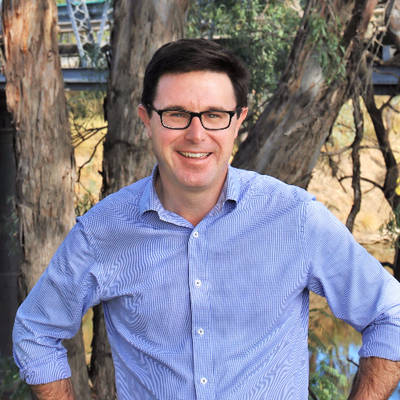
Minister for Agriculture David Littleproud.
MINISTER for Agriculture David Littleproud has defended the $6.4 million spent on Australian Wool Innovation’s online trading platform WoolQ despite it lacking trade support and transparency, and not addressing market failure or making money.
In direct contrast to evidence from peak grower body WoolProducers Australia and the Australian wool trade, Mr Littleproud has told Sheep Central that “the initial development of WoolQ received industry support.”
And on being challenged that he had overseen ongoing expenditure on WoolQ during two Statutory Funding Agreement cycles, Mr Littleproud told Sheep Central: “AWI’s expenditure to develop WoolQ was permissible under the Statutory Funding Agreement as it had benefit to and support of levy payers and shareholders.”
However, clauses in the current and the immediate past Statutory Funding Agreements with the Commonwealth specifically preclude AWI from spending levy and taxpayer funds in areas that lack market failure.
Both these agreements state under their ‘Application of funds’ sections that “funds may only be applied” (SFA 2016-2020) or “AWI must only spend” (SFA 2020-2030) levy funds on R&D, marketing and other activities for the benefit of shareholders and levy payers (previous SFA) or Australian wool growers (current SFA).
Under both SFAs ‘Other activities’ means activities of AWI (other than marketing activities and R&D activities) that are supported by levy payers and shareholders, and that relate to a function for which there is market failure.
AWI has promoted a need to modernise and digitise wool selling, but brokers, growers and exporters have argued that AWI’s WoolQ investment has continued in areas where there has been no market failure, including online wool selling – supplied by AuctionsPlus; electronic speci and bale identification tools, and market reports, developed or provided by the Australian Wool Exchange. More recently AWI has focussed on developing traceability and provenance functions in WoolQ, although such services are already supplied via AWEX’s National Wool Declaration and its SustainaWOOL program, and by other commercial integrity schemes such as the Responsible Wool Standard and Authentico.
A consistent historical lack of support for WoolQ
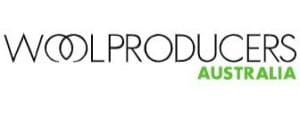 Correspondence from WoolProducers and the peak broker group NCWSBA indicates that support for WoolQ since its inception as the Wool Exchange Portal concept – initially introduced to AWI’s Wool Selling System’s Review — was at best conditional and its benefits remain undefined after six years.
Correspondence from WoolProducers and the peak broker group NCWSBA indicates that support for WoolQ since its inception as the Wool Exchange Portal concept – initially introduced to AWI’s Wool Selling System’s Review — was at best conditional and its benefits remain undefined after six years.
In 2015, WoolProducers president Richard Halliday told Wool Selling Systems Review executive officer John Roberts in 2015 that WPA’s support depended on “a guaranteed commitment from other supply chain partners to utilise the WEP before significant grower levies are devoted to this investigation.” Mr Halliday also wrote: “The WEP appears to have merit, however the lack of detail surrounding it makes it hard to provide anything other than conditional support at this point in time.”
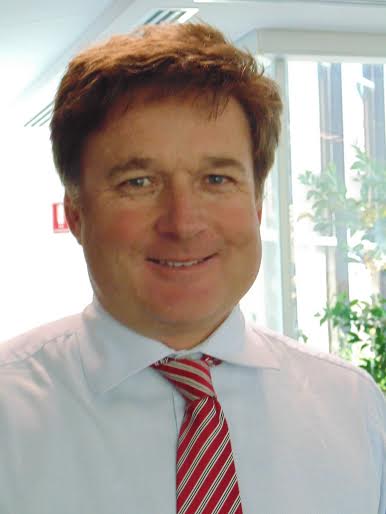
WoolProducers president Ed Storey
In October 2020, new WPA president Ed Storey told AWI chair Colette Garnsey that the peak body believed that for WoolQ to be successful it must be a joint initiative of AWI, the Australian Wool Exchange and testing authority AWTA Ltd, “meaning AWI will have to relinquish complete control of WoolQ to facilitate a partnership approach.” This never eventuated, AWI CEO Stuart McCullough later acknowledged to WPA the low adoption of WoolQ and his frustration over the lack of co-operation between service providers, while also seeking WPA’s support to promote WoolQ.
In July 2021, Mr Storey wrote to new AWI chairman Jock Laurie and said the lack of a guaranteed commitment from all supply chain providers to use WoolQ was “almost certainly one of the key reasons as to the current poor performance of WoolQ.”
Despite recent online WoolQ wool sales, Mr Storey noted that “WoolQ is not performing to any commercial standard.”
“The reality is that even considering the external shocks faced by the Australian wool industry from the COVID pandemic, WoolQ has been given enough time and had enough wool grower dollars allocated towards it to make it a success, it does not appear that there will be any return on investment in the foreseeable future.
“WoolProducers, therefore formally request that AWI cease all current and further investment in WoolQ until there is a legitimate demand from the industry and trade for this mechanism, bearing in mind that this may never materialise, in which case WoolQ will remain an unnecessary cost to Australian growers for absolutely no industry benefit.”
Brokers doubted need for review that spawned WoolQ
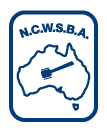 In its May 2018 submission to the Review of Performance of AWI, the National Council of Wool Selling Brokers of Australia listed WoolQ as an example of AWI activity that is “in direct competition to and duplication of services provided commercially to wool growers.”
In its May 2018 submission to the Review of Performance of AWI, the National Council of Wool Selling Brokers of Australia listed WoolQ as an example of AWI activity that is “in direct competition to and duplication of services provided commercially to wool growers.”
“NCWSBA questions why AWI is funding and promoting the development of WoolQ,” the peak body submitted.
“Despite claims by AWI that there is “market failure” which justifies this investment, it is hard to see where in Australia’s competitive wool selling system that those market failures exist:
- there are many brokers and buyers who compete intensely;
- there are few barriers to entry to becoming a broker or a buyer;
- information is freely available, and;
- there are clear property rights to facilitate the transfer of ownership of wool.
“In fact, we question why AWI decided to conduct a review into the wool selling system in Australia in the first place as the auction system is remarkably competitive and transparent.”
The council also submitted that WoolQ would duplicate existing commercial services for the electronic trading of wool and existing digital bale data transfer services, had developed an electronic identification system for wool bales at the same time as AWEX was developing its technology and its launch of an electronic wool classer speci would duplicate an AWEX e-speci in its WoolClips platform. The council said AWI’s weekly wool market summary was “totally unnecessary” and a duplication of market reports provided commercially by AWEX and by brokers.
The NCWSBA recommended that the Australian Government change the Statutory Funding Agreement to reinstate a clause that specifies that AWI can only conduct activities which are not commercially available to wool growers.
“The funding agreement should also require AWI to work collaboratively with other industry bodies,” the council wrote.
Mr Littleproud has said he noted “that the most recent Review of Performance (of AWI) suggests the level of support (for WoolQ) may have wavered.”
“Now the development of WoolQ has reached market testing phase it is an appropriate time for AWI to take stock of the WoolQ project and consider next steps.
“As with any project, this should be done in close consultation with levy payers to consider the next investment or commercialisation pathway for the project,” Mr Littleproud said.
However, after a recent meeting with AWI on WoolQ in which NCWSBA president Rowan Woods and exporters urged AWI to support AWEX’s e-speci and sell WoolQ’s wool trading or market component, the research and development body continued with an online training program for its e-speci.
And although AWI has indicated it plans to commercialise the WoolQ Market or trading component, it declined to tell Sheep Central whether it would support the AWEX e-speci and bale ID system by not continuing with its investments in these areas.
Sheep Central also received no response when it asked AWI whether it intended to implement the recent AWI Review of Performance recommendations to re-set the intent and direction of the Wool Q program and conduct an internal review to create an ongoing stakeholder engagement strategy for the program, including re-engagement with the groups involved in the initial WSSR.
The Accenture review also recommended that AWI implement a set of go/no go criteria for each component of WoolQ, including timing, but AWI has not said whether it will share this criteria with the industry. However, WoolProducers chief executive officer Jo Hall has said after the investment of more than $6 million of wool growers’ money into WoolQ and the ROP assessment that it has not been adopted by any sector of the industry, “by this stage, it (WoolQ) is well past any stop/go analysis.”
And in a further indication that AWI intends to continue spending levy dollars on WoolQ despite industry opposition, in the 2021 WoolPoll Voter Information Memorandum, AWI has said: “Should the income for the levy be reduced dramatically, AWI will invest predominately in attracting increased grower and brand traffic to the WoolQ platform and promote a two-way understanding of both stories of provenance and consumer/brand priorities and requirements.”
AWI representatives recently met with two senators from the Rural Regional Affairs and Transport Committee and maintained that a report into AWI’s options with WoolQ by consultancy EY Port Jackson Partners could not be released because some sections were “commercial in confidence.” AWI has been asked to submit a redacted version of the report to the senators.
AWI will commercialise WoolQ, but how?
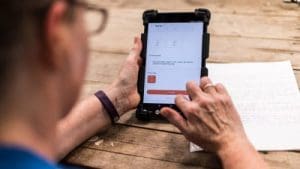
AWI says WoolQ will be commercialised.
On September 10, despite an AWI spokesperson would only tell Sheep Central that “AWI will commercialise WoolQ Market like any other product of our research.”
“The timing and ownership details of the process have yet to be determined.”
The WoolQ Market platform has failed to generate significant revenue or reach an operating target of selling 2 percent of all Australian wool traded in 2019-20. AWI has admitted to Senate Estimates that the number of registered WoolQ user ‘sign-ups’ is declining. Registered user sign-ups declined from a peak of 822 in the second quarter of 2018 to less than 100 per quarter since late 2020.
Yet at the Wool Connect conference on September, WoolQ was introduced as “the single online destination for Australian wool growers and wool industry, to access and interact with industry information, data, selling choices and trading opportunities.”
AWI chief of operations John Roberts said the industry was increasingly having to respond to consumer demands for transparency and traceability. He said traceability is now a key priority within AWI’s strategic plan.
“We think there is a great opportunity for us now to take advantage of this traceability and also on some of the great work that has been done by a number of other people in operations to date and to help validate some of those accreditation schemes that are in the market place already.”
He said AWI is working on a number of traceability “proof of concepts”.
“But it’s fair to say WoolQ represents a key part of this, it’s a foundation piece we believe in starting that data journey and providing rich data right through the supply chain.”
WoolQ and traceability manager Mark Scott said the WoolQ platform “catches data, offers selling choices for wool growers and offers an opportunity to connect to the broader industry”. He said WoolQ has more than 3500 users with more than 1000 business profiles, most of which are growers.
He said WoolQ can be the first step in building traceability by connecting to existing wool industry data networks capturing data on-farm with the e-speci, which can be followed through the broker, testing and sale.
“So what this creates is the foundation for Australian wool to be able to connect in a streamlined manner with other traceability systems,” he said, “packaging” information without a paper trail.”
He said growers can nominate on WoolQ their people, animal and land management, and the quality assurance schemes they are part of. Schemes can also join the platform and verify grower participation and data, he said.
“We will continue to discuss this feature with quality assurance schemes to understand their business needs.
“We would also like to highlight to wool growers where they might fit the criteria from their self-reporting for certain quality assurance schemes,” he said.
“We are not in the business of telling growers what to say or do, but we do want to provide them a platform for them to be able to share what they do.
“We see this as a tool to capture that (integrity) information and showcase it.”
Mr Roberts said AWI thinks there is an opportunity with the Woolmark licensing program “to perhaps incorporate the traceability into the value proposition of being a Woolmark licensee.”
However, Mr Roberts said AWI wanted to avoid duplication in the transparency area.
“We want to work with any of the accreditation schemes, whether it be RWS or SustainaWOOL or Authentico to help validate things and perhaps reduce the paper burden and be able to make this a simpler process and a good opportunity for growers to tell their stories.”
Mr Roberts said ideally AWI would like to think brands can visit WoolQ and be inspired by growers’ stories to connecting with brokers and exporters to source and aggregate wool.
“It’s a connectivity hub which we are hoping will be further embraced in the future.”
Mr Roberts rejected Sheep Central’s asking why WoolQ was trying to duplicate the traceability services of integrity schemes after it has failed to generate significant support for its duplication of e-specis and online selling.
“I think the premise of that question is not really incorrect, I mean, we’re not trying to duplicate anything.
“To date, we see in the traceability space, we see some good efforts being made and we’ve been approached by a number of accreditation schemes to help them with…particularly once we finish our blockchain trials, people are very interested that we can actually assist them in trying to help better validate and simplify the process and reduce the paper trail.
“So there is no duplication happening in that space at all, so that has me somewhat confused,” he said.
Mr Roberts said in terms of “trying to duplicate the selling system”, the decision to include a selling component in the WEP platform was made a group of people — the WEP Working Group – that was “at arm’s length to AWI”.
“With the electronic e-speci, we asked if we could use the AWEX e-speci, we didn’t want to develop an e-speci, but ultimately we had to have one.
“I think one person’s duplication is another person’s competition, it depends on how you want to look at it.”
On September 13 at the Meet the Chairman webinar, Sheep Central asked Mr Laurie how much had AWI spent on WoolQ to date and did it have an upper limit on total expenditure for project completion.
“We are now in the 6th year since the WEP,” Mr Laurie said.
“Since then, $6.4 million has been spent on consultation, development, and operations over the 6 years. $2.2m of the $6.4m was spent on initial WoolQ development.”
Is an ANAO audit into AWI and WoolQ necessary?
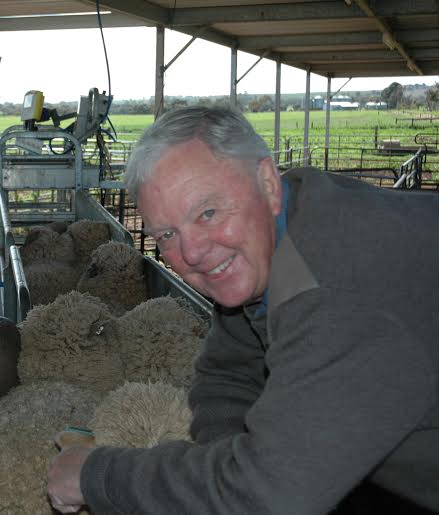
Former AWEX and AWI director John Keniry
Last month Labor senator and RRAT committee member Glenn Sterle expressed support for an Australian National Audit Office investigation into AWI and accused Mr Littleproud of “kicking the can down the road” by not acting on AWI issues. Mr Littleproud has refused to respond to Sheep Central questions on whether he would support or oppose an Australian National Audit Office investigation into AWI.
However, former AWI and AWEX director John Keniry said there is a case for a closer examination of how much taxpayer and levy payer money has been spent on WoolQ and on marketing through an ANAO audit.
“If I was still an AWEX director I would offer them a $1 for the whole bloody lot and they should stay out of spending grower money on things that have already been done and funded by the beneficiaries, who are the growers who are already in it.
“If you spend $6 million to do something that is a dead duck, then who pays the price?”
Mr Keniry said WoolQ “doesn’t contribute anything, it is just duplicating.”
“You have to pay quite a bit of money to be in SustainaWOOL and that’s how it should be, if you don’t want to be in it, well don’t pay.
“But if AWI is in it, everybody is paying,” he said.
Mr Keniry believed AWI should not get the co-operation of the integrity schemes in sharing grower data, because “all they are doing is what they did in starting WoolQ, they are just competing with something that is already happening.”
Mr Keniry raised the possibility that AWI might have sought matching taxpayer funds from the Federal Government in its expenditure on WoolQ.
“If they have drawn down Commonwealth money levy funds to match the levy and called it R&D, then that shouldn’t be allowed.
“Have the taxpayers paid for any of this nonsense?”
Mr Keniry said if AWI has used taxpayers’ funds on WoolQ development, someone in Mr Littleproud’s Department of Agriculture Water and the Environment should be checking if the $6.4 million outlay is justified.
“If Littleproud is saying to you that WoolQ is a legitimate development expense then that signals to me that it probably was paid for as an R&D activity.”
Nationals Whip also concerned about AWI’s lack of transparency
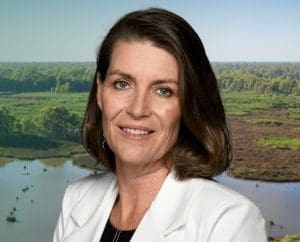
Senator Perin Davey is concerned about AWI’s transparency on WoolQ.
Participating member of the RRAT committee and the Nationals Whip in the Senate, Senator Perin Davey, said she believed “at the very least” AWI needs to provide the EY Port Jackson Partners report to the senators, with the commercial in confidence sections redacted.
“But they need to provide the report and all of the recommendations to the RRAT.
“I would ideally like RRAT to get the unabridged report, I can understand concerns about it going wider in the absence of having that assessment,” she said.
“But I do think that levy payers should have access to the recommendations.
“I can’t see how recommendations in such a report would be commercial in confidence.”
Senator Davey has told industry representatives that AWI should be accountable to government and levy payers, but she said she had not considered deeply about the potential of an ANAO audit.
“But I am concerned about the lack of transparency.
“We know that they’ve spent $6.4 million on it, my understanding is WoolQ is a series of services and platforms, there is the selling arm and other aspects, but it is not clear and it is not clear for levy payers and this is where the concern is,” she said.
“This is AWI who gets their money from the Federal Government and levy payers, but they’re not answering either body’s questions.
“When I talk to growers who are levy payers, they are disillusioned by the lack of transparency and obviously you’ve seen the frustration at the RRAT committee about the lack of transparency,” she said.
She said AWI also has not fully responded to the 2018 ROP recommendations that requested cultural changes.
“A lot of work needs to be done for AWI to rebuild trust with the both the Federal Government and their levy payers.”
Ms Davey said she has requested that AWI be on the witness list for Senate Estimates hearings next month.
“If the RRAT committee gets a briefing about WoolQ prior to that then I hope they can share it with all participating members, but I think need to attend at the public hearing and answer a lot of these questions.”
As to what the Federal Government could do, Senator Davey said things need to be taken in stages.
“If the RRAT committee is dissatisfied with the answers then I think we look at what other measures the government or indeed the Senate could take.”

It doesn’t matter who looks at AWI, from the Minister down, the same concerns keep appearing. Transparency, culture, wastage. Can someone in government please help? I am sick of paying levies to an organisation that finances projects that are wasting levy payers’ hard-earned money. The levy payer needs control of their levies. The wastage will never stop, while AWI is the sole beneficiary of the compulsory levies.
For example, $60 million so far and still an open cheque book on fly prevention and we have had the worst fly year in twenty years last year.
There are research projects that we badly need; however, this mob (AWI) continues to support the status quo, not encouraging the industry to produce what the market wants.
Sadly, my only avenue to fix this problem is to vote 1 percent in WoolPoll, and AWI is pushing levy payers into 2 percent. AWI should have nothing to do with recommending levy amounts. They are just making sure the gravy train continues.
As I have asserted for sometime, AWI can do what ever it likes as it is enjoys political patronage at the highest level, clearly revealed in this excellent article.
If the government is agreeable for AWI to spend $6.4 million on a “wild goose chase”, in an area where there is no evidence of market failure, and Graeme Samuel, Australia’s competition guru said so at the very beginning, then the government should pay the $6.4 million, not the growers.
Waste and duplication, yet AWI wants an increased levy.
Another reason to vote 1 per cent at WoolPoll